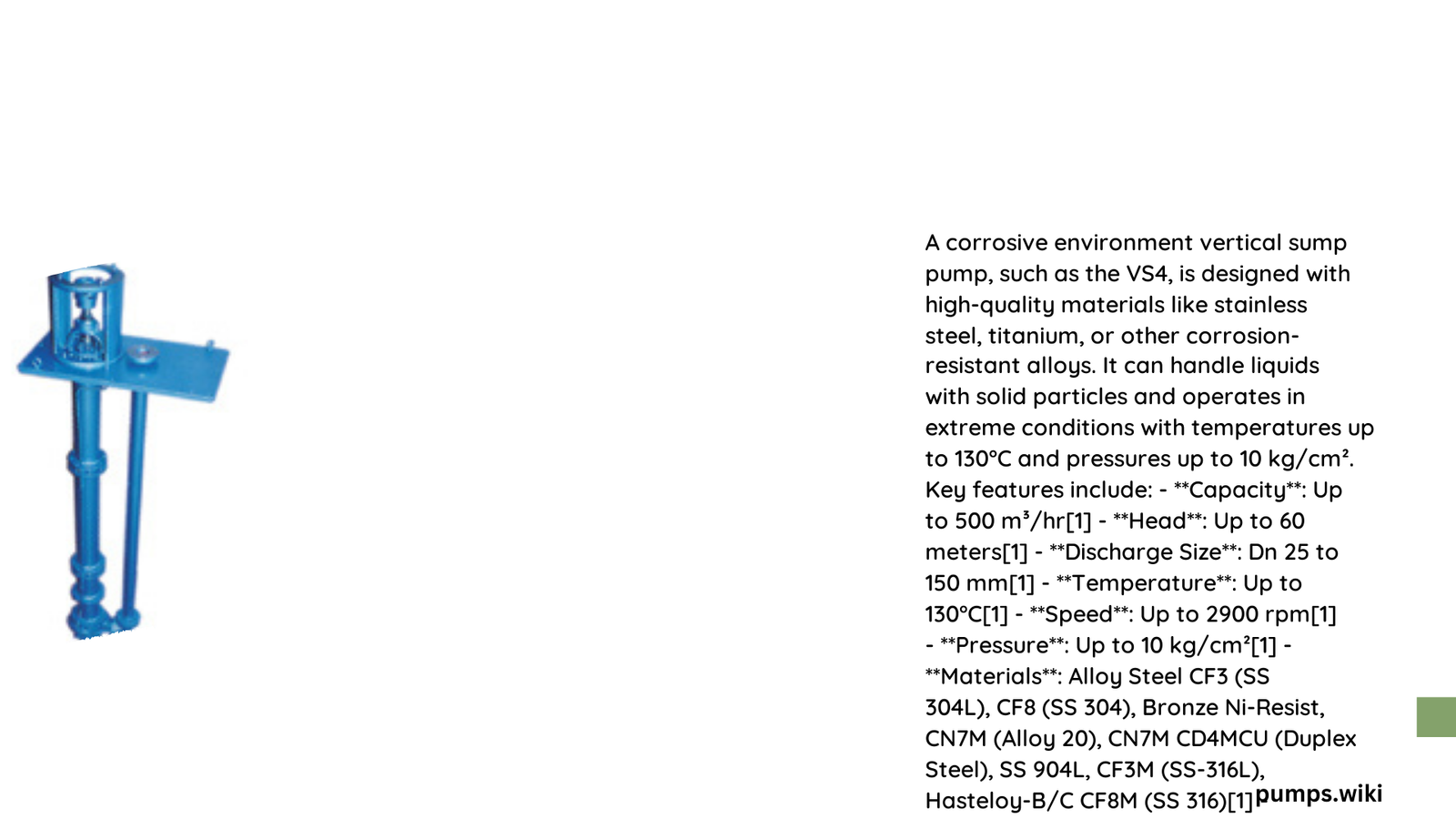Corrosive environment vertical sump pumps are specialized pumping solutions designed to handle aggressive fluids in industrial settings. These pumps are constructed with highly resistant materials like 316 stainless steel, titanium, and silicon carbide to withstand corrosive chemicals, acids, and other harsh substances. They play a crucial role in various industries, including chemical processing, wastewater treatment, and marine applications, where standard pumps would quickly deteriorate.
What Are the Key Materials Used in Corrosive Environment Vertical Sump Pumps?
Corrosive environment vertical sump pumps utilize a range of materials specifically chosen for their resistance to chemical attack and wear. Here are some of the most common materials used:
-
316 Stainless Steel: This alloy contains 18% chromium, 8-10% nickel, and 2% molybdenum, providing excellent resistance to acids and localized corrosion.
-
304 Stainless Steel: While less resistant to acids than 316 stainless steel, it still offers good corrosion resistance and is used in some pump models.
-
Titanium: Particularly effective in seawater pumps, titanium provides superior corrosion resistance in marine environments.
-
Silicon Carbide: Used in sealing parts, silicon carbide offers 5 times higher corrosion, wear, and heat resistance compared to tungsten carbide.
-
NBR or FPM (FKM) Rubber: These materials are used for rubber components, offering higher resistance to heat and chemicals.
What Are the Detailed Specifications for Chemical Resistant Sump Pumps?

Chemical resistant sump pumps come in various models with different specifications. Here’s a comparison of two popular series:
| Specification | Tsurumi SFQ Series | March Pump Corrosion-Resistant Pumps |
|---|---|---|
| Material | All wetted parts in 316 stainless steel | 316 Stainless Steel (housing, impeller), Viton (O-Ring), Ceramic (shaft, thrust washers), Carbon (bushing) |
| Flow Rates | 50 GPM, 75 GPM, 100 GPM, etc. | Up to 200 GPM (654 LPM) |
| Maximum Head | Up to 160 feet (49 meters) | Up to 160 feet (34.1 meters) |
| Temperature Range | Up to 104°F (40°C) | 32°F to 104°F (0°C to 40°C) |
| Special Features | Seal pressure relief ports for 7.5 HP and above motors | Varies by model |
What Are the Common Challenges in Installing and Maintaining Industrial Vertical Sump Pumps?
Industrial vertical sump pumps face several challenges in corrosive environments:
-
Corrosion: The primary challenge is the constant exposure to corrosive fluids, which can lead to premature wear and failure of pump components.
-
Abrasive Wear: Solids present in the pumped fluid can cause abrasive wear, damaging the protective layer on materials like stainless steel.
-
Erosion-Corrosion: High fluid velocities combined with gas bubbles and solid particles can lead to erosion-corrosion, often mistaken for cavitation damage.
What Are the Best Practices for Installing and Maintaining Corrosive Environment Vertical Sump Pumps?
To ensure optimal performance and longevity of corrosive environment vertical sump pumps, consider these best practices:
-
Material Selection: Choose pump materials that are chemically compatible with the specific corrosive fluid being pumped.
-
Regular Inspection: Conduct frequent inspections to check for signs of corrosion, wear, and erosion. Pay special attention to impeller clearance and the condition of seals and gaskets.
-
Proper Installation: Ensure correct pump installation to avoid misalignment and improper operation, which can increase wear and corrosion.
-
Routine Maintenance: Perform regular maintenance tasks such as cleaning and lubricating the pump according to the manufacturer’s guidelines.
-
Protective Measures: Apply protective coatings or use zinc anodes to guard against galvanic corrosion, especially in environments with high chloride content.
What Is the Cost Breakdown for Purchasing and Installing a Corrosion-Resistant Pump?
The cost of purchasing and installing a corrosion-resistant pump can be broken down as follows:
Initial Investment
- Pump Cost: $5,000 to $20,000 or more, depending on size and specifications
- Installation Cost: $1,000 to $5,000, varying with installation complexity
Maintenance Costs
- Routine Maintenance: $500 to $2,000 per year
- Replacement Parts: $500 to $5,000, depending on material and quality
Expected Lifespan
A well-maintained corrosion-resistant pump can last 5 to 15 years or more in typical corrosive conditions.
How Do Different Pump Materials Perform in Various Corrosive Environments?
Different pump materials exhibit varying levels of resistance to corrosive substances. Here’s a quick comparison:
| Material | Acid Resistance | Chloride Resistance | Abrasion Resistance |
|---|---|---|---|
| 316 SS | High | Moderate | Moderate |
| 304 SS | Moderate | Low | Moderate |
| Titanium | Very High | Very High | Low |
| Duplex SS | High | High | High |
What Are the Key Factors to Consider When Selecting a Corrosive Environment Vertical Sump Pump?
When choosing a corrosive environment vertical sump pump, consider these crucial factors:
-
Chemical Compatibility: Ensure the pump materials are compatible with the specific corrosive fluid being pumped.
-
Flow Rate and Head: Select a pump that can handle the required flow rate and head for your application.
-
Temperature Range: Verify that the pump can operate within the temperature range of your process.
-
Solid Handling Capability: If the fluid contains solids, choose a pump designed to handle particulates.
-
Maintenance Requirements: Consider the ease of maintenance and availability of spare parts.
-
Energy Efficiency: Look for pumps with high efficiency ratings to reduce operating costs.
-
Life Cycle Cost: Factor in both initial investment and long-term maintenance costs when making your decision.
By carefully considering these factors, you can select a corrosive environment vertical sump pump that will provide reliable performance and longevity in your specific application.
